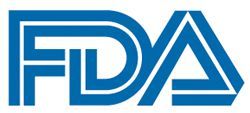FDA Grants Fast Track Status to Selinexor for Myelofibrosis
The FDA has granted a fast track designation to selinexor for use in the treatment of patients with myelofibrosis, including primary myelofibrosis, post–essential thrombocytopenia myelofibrosis, and post–polycythemia vera myelofibrosis.

The FDA has granted a fast track designation to selinexor (Xpovio) for use in the treatment of patients with myelofibrosis, including primary myelofibrosis, post–essential thrombocytopenia (ET) myelofibrosis, and post–polycythemia vera (PV) myelofibrosis.1
Data from the phase 1 XPORT-MF-034 trial (NCT04562389) showed that when selinexor was given at a once-weekly dose of 60 mg in combination with standard ruxolitinib (Jakafi), 83.3% of efficacy-evaluable patients (n = 12) experienced a reduction in spleen volume of at least 35% (SVR35) at week 12, and 91.7% did so at week 24.2 Additionally, 77.8% of 9 evaluable patients experienced a 50% or greater reduction in total symptom score (TSS50) at week 24.
The combination is under investigation in JAK inhibitor–naïve patients with myelofibrosis as part of the phase 3 XPORT-MF-034 trial (NCT04562389).3 Top-line data are anticipated to read out in 2025.1
“Fast track designation for selinexor highlights its potential to address the unmet medical need in myelofibrosis, an important acknowledgment as we continue our pivotal phase 3 study,” Reshma Rangwala, MD, PhD, chief medical officer of Karyopharm Therapeutics, Inc., stated in a press release.1 “Selinexor’s unique mechanism of action, XPO1 inhibition, is a novel and potentially fundamental mechanism in myelofibrosis. We have been highly encouraged by the efficacy and safety data observed to date [in our phase 1 study] with selinexor in combination with ruxolitinib in patients with treatment-naïve myelofibrosis and believe selinexor has the potential to shift the treatment paradigm,”
The open-label, phase 1 trial enrolled patients with JAK inhibitor–naïve myelofibrosis who had a spleen volume of 450 cm3 or greater by MRI or CT; intermediate-1, intermediate-2, or high-risk disease by Dynamic International Prognostic Scoring System (DIPSS) criteria; an ECOG performance status of 0 to 2; and a platelet count of at least 100 x 109/L.2
Determining the maximum tolerated dose, the recommended phase 2 dose, and the toxicity profile of the regimen served as the primary end points of the trial. Secondary end points comprised SVR35, TSS50, overall survival, anemia responses, adverse effects (AEs), objective response rate, and pharmacokinetics.
The median age of those who received the combination (n = 14) was 64.5 years (range, 58-77), and 35.7% of patients were female. The median weight of patients at baseline was 77.5 kg (range, 54.7-141.9), and median baseline spleen volume was 1961.6 cm3 (range, 650.1-3657.0). Most patients (92.9%) were transfusion independent, had hemoglobin level of less than 10 g/dL (57.1%) and a platelet count of 150 109/L or greater (85.7%).
Half of patients had primary myelofibrosis, 28.6% had post-EV myelofibrosis, and 21.4% had post-PV myelofibrosis. Regarding DIPSS risk, 57.1% had intermediate-2 risk disease, and 21.4% of patients each had intermediate-1 or high-risk disease. More than half (78.6%) of patients harbored JAK2 mutations, 14.3% harbored CALR mutations, and 7.1% had MPL mutations. Moreover, 35.7% of patients were noted to have a high-risk mutation.
At a data cutoff date of April 10, 2023, in the intention-to-treat population (n = 14), the SVR35 at weeks 12 and 24 was achieved by 71.4% and 78.6% of patients, respectively. The TSS50 at week 24 was achieved by 58.3% of evaluable patients in this population (n = 7/12).
Rapid, deep, and sustained spleen responses were observed with the doublet spanning all subgroups. Notably, SVR35 was noted in all evaluable patients at any time and rates of SVR35 at week 24 proved to be consistent by gender and irrespective of the starting dose of ruxolitinib.
The most common any-grade treatment-emergent AEs (TEAEs) experienced by more than 25% of patients (n = 14) included nausea (78.6%), anemia (64.3%), thrombocytopenia (64.3%), fatigue (57.1%), constipation (50%), vomiting (50%), headache (35.7%), dyspnea (35.7%), neutropenia (35.7%), hyponatremia (35.7%), leukopenia (35.7%), reduced appetite (28.6%), dysgeusia (28.6%), back pain (28.6%), fall (28.6%), myalgia (28.6%), pain in extremity (28.6%), and contusion (28.6%).
Grade 3 or higher TEAEs observed in more than 10% of patients included anemia (42.9%), thrombocytopenia (28.6%), and back pain (14.3%).
Two patients experienced treatment-related AEs that required discontinuation of study treatment; 1 patient had grade 3 thrombocytopenia and another patient had peripheral neuropathy.
The randomized, double-blind, placebo-controlled, phase 3 XPORT-MF-034 study is recruiting patients with primary myelofibrosis, post-ET myelofibrosis, or or post-PV myelofibrosis by 2016 World Health Organization criteria.3 Patients need to have measurable splenomegaly; DIPSS risk category of intermediate-1, intermediate-2, or high; an ECOG performance status ranging from 0 to 2; a platelet count of 100 x 109/L or higher without transfusion; an absolute neutrophil count of 1.0 x 109/L or higher without growth factors; and acceptable liver function.
Study participants will be randomly assigned 2:1 to receive ruxolitinib plus selinexor at 60 mg or placebo in 28-day cycles.4 The dose of ruxolitinib will be selected by investigators based on baseline platelet counts and prescribing information. SVR35 and TSS50 at week 24 will serve as the primary end points of the trial, and week 24 anemia response serves as a key secondary end point.
In June 2023, Karyopharm Therapeutics, Inc. announced the initiation of the trial. They also shared plans to expand the clinical development program for selinexor in myelofibrosis, which will include the investigation of first-line and combinatorial approaches utilizing the drug.
References
- Karyopharm receives FDA fast track designation for selinexor for the treatment of myelofibrosis. News release. July 17, 2023. Accessed July 18, 2023. https://investors.karyopharm.com/2023-07-17-Karyopharm-Receives-FDA-Fast-Track-Designation-for-Selinexor-for-the-Treatment-of-Myelofibrosis
- Ali H, Kishtagari A, Maher KR, et al. Selinexor (sel) plus ruxolitinib (rux) in JAK inhibitor (JAKi) treatment-naïve patients with myelofibrosis: updated results from XPORT-MF-034. J Clin Oncol. 2023;41(suppl 16):7063. doi:10.1200/JCO.2023.41.16_suppl.7063
- Study of selinexor in combination with ruxolitinib in myelofibrosis. ClinicalTrials.gov. Updated July 3, 2023. Accessed July 18, 2023. https://clinicaltrials.gov/study/NCT04562389
- Karyopharm initiates pivotal phase 3 study of XPO1 inhibitor selinexor and ruxolitinib in JAK inhibitor (JAKi) naïve myelofibrosis. News release. Karyopharm Therapeutics, Inc. June 28, 2023. Accessed July 18, 2023. https://investors.karyopharm.com/2023-06-28-Karyopharm-Initiates-Pivotal-Phase-3-Study-of-XPO1-Inhibitor-Selinexor-and-Ruxolitinib-in-JAK-Inhibitor-JAKi-Naive-Myelofibrosis



